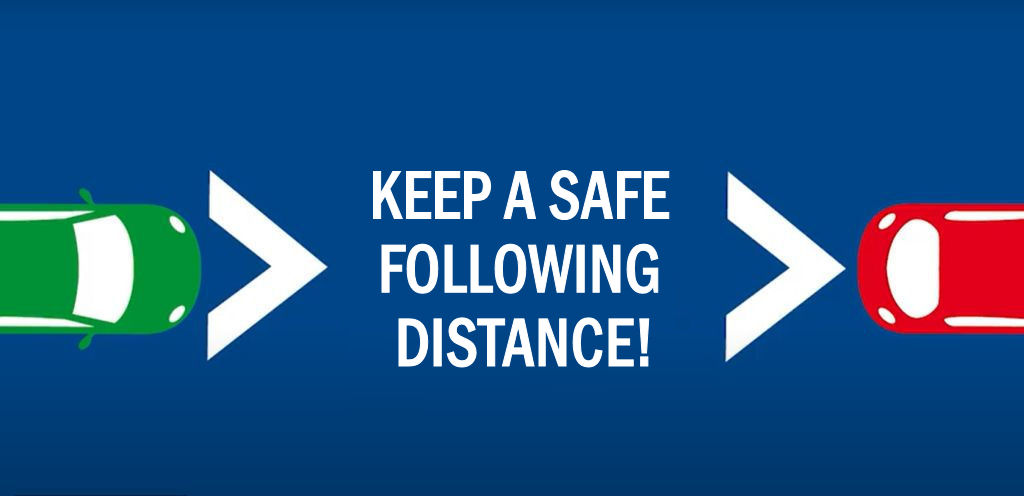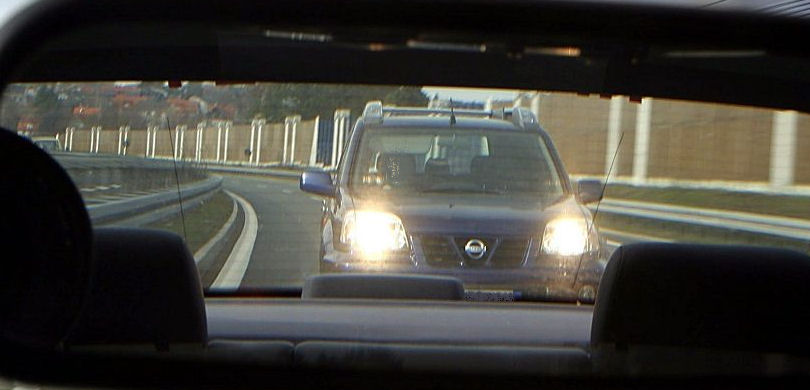Unfortunately, drivers do not pay enough attention to the safe following distance. Following too closely reduces your visibility of the road ahead, reduces your reaction time, often associated with excessive speed, is therefore one of the most common causes of traffic accidents on Slovenian roads.

The higher the speed, the more dangerous the inadequate safety distance!
Why is adequate safe following distance so important?
If the driver driving in front of us slows down or stops, only an adequate safe following distance allows us to slow down in time or stop safely and thus prevent a collision!
You have to pay even more attention to the safe following distance when driving on the motorway or expressway, since we drive faster than on other roads.
The safe following distance also allows the driver who overtook us to safely return to the lane in front of our vehicle.
2-second rule
The safe following distance as an obligation of drivers is prescribed in the Road Traffic Safety Act, where it is specified:
- A driver driving behind another vehicle in the same traffic lane must drive at an appropriate safety distance. This must not be shorter than the distance he covers in two seconds at the speed at which he is driving.
| At a speed of 100 km/h, the safety distance is at least 56 metres, at a speed of 130 km/h, it is a minimum of 72 metres. |
- When a slower convoy of vehicles is formed in good traffic conditions, the safety distance can also be shortened, but it must not be shorter than the distance that the vehicle travels in one second at the speed it is driving at.
How can I check whether I am driving at a sufficient safe following distance?
We use the 'second' method or the two-second rule by choosing an object or orientation point (for example, a traffic sign or a road indicator) at the edge of the carriageway.
When the vehicle in front of us passes this point with the rear of the vehicle, we start counting in one-second beats: "Twenty-one, twenty-two." If we pass the same place with the front part of the vehicle at the end of the two-second count, we have an adequate safe following distance. If we pass it earlier, our safe following distance is too short.
Control over compliance with the prescribed safe following distance
The safe following distance is determined by the police officers using the Provida video surveillance system, and it is calculated based on the time and distance traveled by a vehicle.
The police officers record the alleged violation (both vehicles must be covered), and the Provida vehicle must drive at the same speed as the violator (if the two speeds are different, the lower speed, which is more favourable to the offender, is taken into account). Certain fixed points on the carriageway or various lines, shadows and the like are required for the calculation, which are marked with lines on the pictures.
In cases where an inadequate safe following distance is unequivocally visible from the video itself, the police officers issue a payment order to the violator on the spot, otherwise the video is first processed in the unit, and the violator is then served with a payment order and photos by post.
 The photo shows a lorry driver who has a considerably too short safe following distance.
The photo shows a lorry driver who has a considerably too short safe following distance.
Prescribed fines for not observing the safe following distance
In accordance with Article 44 of the Road Traffic Rules Act:
- a fine of 40 euros is imposed on a driver who does not need a driver's license and does not observe the safe following distance,
- a fine of 200 euros is imposed on the driver of a motor vehicle who fails to drive at the adequate safe following distance,
- a fine of 300 euros is imposed on the driver of a motor vehicle who fails to drive at the safe following distance specified by a traffic sign. The driver is also given 3 penalty points.

Related content
Traffic safety
Failure to keep safe following distance one of the most common causes of road accidents. Almost three hundred driving offences identified in yesterday’s stepped up motorway enforcement

